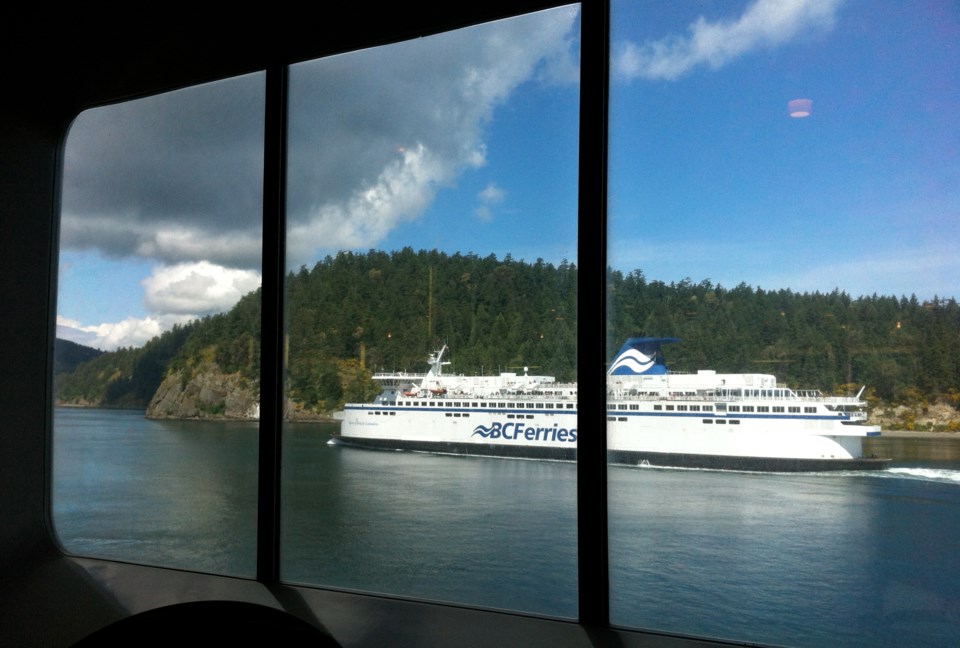B.C. Ferries vehicle numbers hit a record and passenger figures were the highest in two decades during the first three months of the company’s fiscal year.
However, net earnings slid to $6 million for the three months ending June 30 from $17.3 million during that same period last year.
The earnings drop is due to the 15 per cent fare reductions that kicked in April 1 on all routes other than the Metro Vancouver-Vancouver Island sailings. Fares held steady on the major routes to and from Vancouver Island.
As well, the B.C. seniors discount on passenger fares was reinstituted in April. That means the passenger portion of a fare is free Monday to Thursday on most routes for those 65 and older.
Earnings were also affected by the addition of sailings at busy times, which increased operating expenses, the company said in its quarterly report Friday.
“Traffic across the system has grown, and we are working hard to deliver the travel experience our customers expects,” said Mark Collins, Ferries’ president and CEO.
“However, at some of these unprecedented traffic levels, we know that some travellers and communities are seeing some delays.”
Traffic remains heavy this quarter on major routes between Vancouver Island and the Lower Mainland. Last weekend saw some passengers wait several sailings before they could board.
Revenues rose by 1.5 per cent to $229.7 million, from $226.2 million, in the first quarter, mainly because of the higher level of traffic, but that was partly offset by the lower fares.
“With traffic levels the highest our company has ever experienced, we continue to add service where possible, resulting in higher operating expenses,” Collins said.
Operating expenses increased by 7.8 per cent to $209.9 million in the first quarter, from $194.7 million in the same quarter last year, thanks to higher labour and training costs and an increase in fuel consumption.
An extra 352 round trips were added to meet the higher demand. As well, schedules were adjusted for Horseshoe Bay service, and there were costs associated with bringing the Spirit of British Columbia back into service after its mid-life upgrade. The upgrade included converting the ship’s engines for dual-fuel, meaning that it can operate on liquefied natural gas.
The Spirit of British Columbia returned to service on June 6 on the Tsawwassen-Swartz Bay route. That vessel is one of four in the fleet capable of operating on LNG.
Capital costs for the first quarter total $72.8 million for projects including the Spirit-class mid-life upgrades, major overhauls and inspection on vessels, and new Island class vessels now being built.
B.C. Ferries is continuing to modernize its fleet. It has issued requests for expressions of interest for four Island-class vessels and one Salish-class vessel.
As well, direct service between Port Hardy on the north of Vancouver Island and Bella Coola on the central coast resumes Sept. 16 and runs until Oct. 11.
The Northern Sea Wolf, purchased in Greece, required extensive upgrading, B.C. Ferries said.



